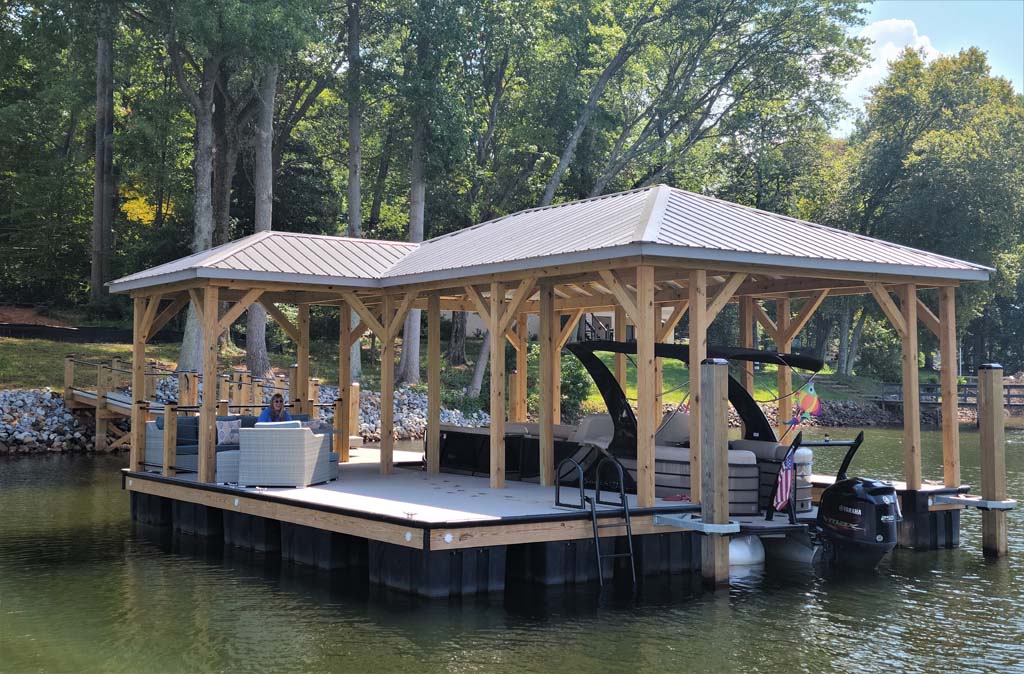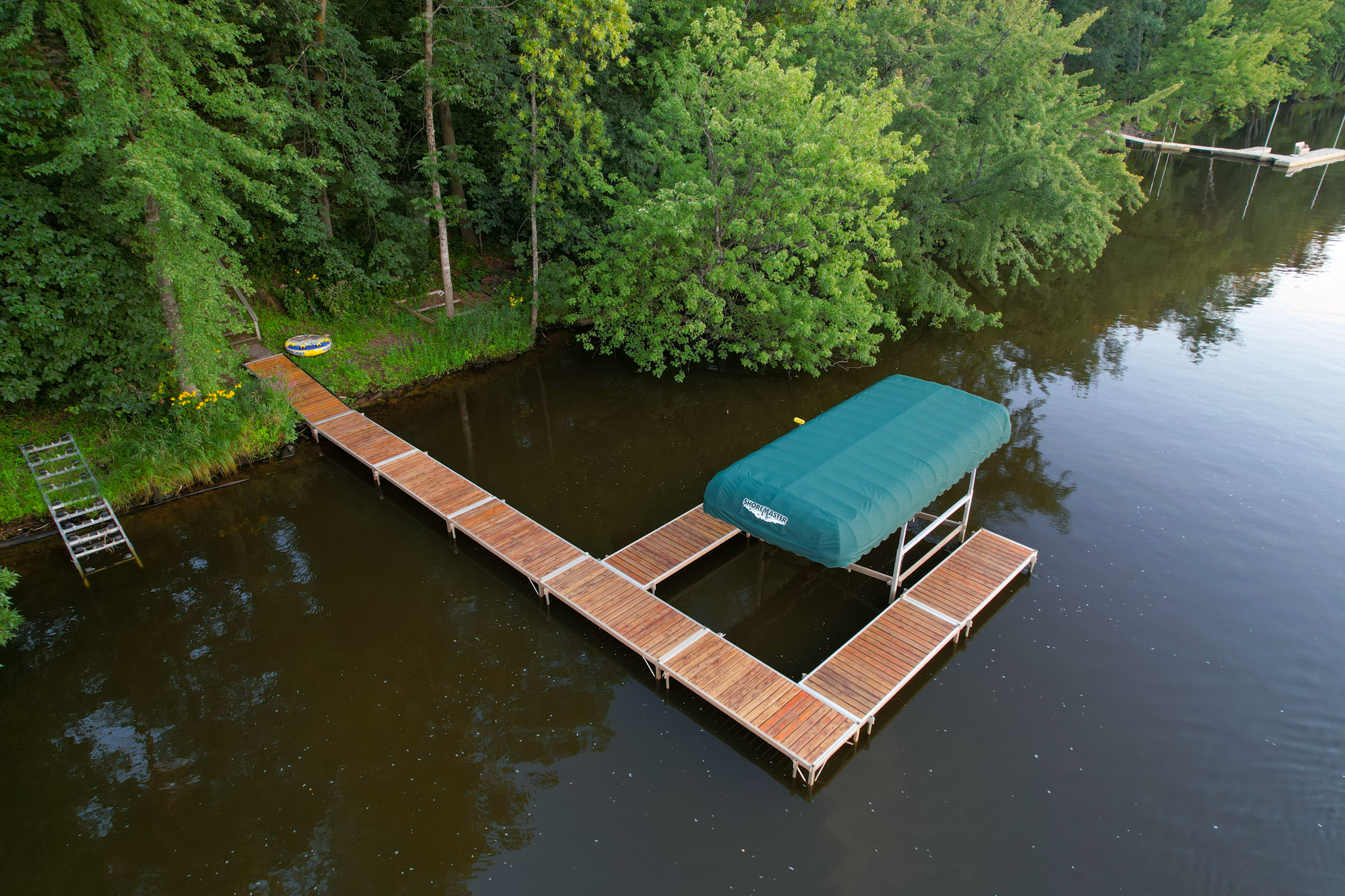Discover the Range of Floating Dock Solutions Designed to Suit Every Boater's Requirements
Discover the Range of Floating Dock Solutions Designed to Suit Every Boater's Requirements
Blog Article
Upgrade Your Waterside With Resilient Floating Docks
Updating your waterside with resilient floating docks can considerably enhance both capability and visual appeals, providing a functional option for different water tasks. These frameworks are developed to adjust to rising and falling water levels, ensuring safety and security and ease of access throughout the seasons. With a variety of materials readily available, including low-maintenance alternatives and standard wood, choosing the right dock can enhance your personal design and meet functional needs. Nonetheless, understanding the subtleties of installation and upkeep is vital for guaranteeing long life and performance. What factors should you think about when making this investment?
Benefits of Floating Docks
Floating docks offer a multitude of benefits that improve their appeal for numerous maritime applications. Unlike conventional set docks, floating docks rise and loss with the tide, ensuring constant ease of access for watercrafts and watercraft no matter of environmental problems.
Furthermore, floating docks are easier to mount and relocate, giving versatility for short-lived or seasonal usage. Their modular layout enables modification to fit specific demands, whether for private marinas, property waterfronts, or industrial applications.
Additionally, floating docks produce very little disruption to the aquatic atmosphere, maintaining local environments and reducing the possibility of disintegration. They also offer boosted safety and security and stability for users, as their buoyant nature uses an extra forgiving surface than rigid structures.
Moreover, floating docks can facilitate a diverse range of activities, such as fishing, swimming, and leisure boating, making them a beneficial property for waterfront development. Their flexibility and functionality make floating docks a recommended selection for a variety of maritime projects.
Choosing the Right Materials
Selecting suitable materials for floating docks is crucial to their durability, efficiency, and overall efficiency. When choosing materials, consider elements such as ecological direct exposure, maintenance requirements, and architectural integrity. Typical products include timber, plastic, light weight aluminum, and composite choices, each offering distinct benefits and drawbacks.
Wood, while aesthetically pleasing, needs regular maintenance to stop rot and degeneration. Pressure-treated timber can enhance toughness, yet it might still yield to water damage over time. Plastic drifts, usually made from high-density polyethylene, are immune to rust and require minimal maintenance, making them an appealing choice for low-maintenance applications.
Light weight aluminum is an additional practical option, recognized for its stamina and lightweight homes. It is resistant to corrosion and can endure harsh weather, although it may be a lot more expensive than various other materials. Compound products combine the ideal qualities of timber and plastic, using a resilient and low-maintenance option that resembles the appearance of timber without the connected downsides.
Eventually, the selection of material need to line up with the planned use, ecological considerations, and spending plan constraints, making certain a resilient and useful floating dock that satisfies your details needs.
Installment Refine Summary
The effective installation of a floating dock depends on careful planning and implementation, ensuring that it operates successfully in its desired environment. The very first step involves evaluating website my company problems, including water depth, shoreline attributes, and dominating weather patterns, which will notify the dock layout and anchoring system.
Adhering to the site evaluation, the next stage is to prepare the floating dock parts. This consists of assembling the framework, protecting drifts, and affixing any kind of necessary hardware. It is important to make sure that all links are durable and waterproof to withstand marine conditions.
Once the dock is assembled, the installation process commences with positioning the dock in the water. This can include a crane or other lifting devices, particularly for larger structures. Appropriate positioning is necessary for capability and safety and security.

Upkeep Tips for Longevity
Normal maintenance is essential for making certain the long life and optimal performance of a drifting dock. To accomplish this, begin with regular inspections at the very least twice a year, concentrating on the integrity of the dock's structure, including the flotation protection tools and linking equipment. Search for indicators of rust, damages, or wear, and address any type of concerns promptly to stop more wear and tear.
Cleaning up is an additional crucial element of upkeep. Get rid of debris, algae, and barnacles from the dock's surface to stop unsafe problems and maintain aesthetic charm. Utilize a light detergent and a soft brush to prevent harming the dock's products.
In addition, ensure that the dock is properly anchored and protected to stand up to seasonal adjustments in water degrees and weather. Check the anchoring system for stability and make adjustments as required.
Enhancing Your Outdoor Aesthetic
To create a visually appealing outside area, integrating a floating dock can considerably improve the general aesthetic of your waterfront residential property. Floating docks are not only practical but can also act as a striking prime focus that enhances the natural environments - floating docks. Available in numerous products and styles, these docks can be customized to match your residential or commercial property's architectural design and landscape
The addition of ornamental elements, such as incorporated illumination or trendy railings, better boosts the dock's visual appeal. Take into consideration utilizing natural timber surfaces, which blend seamlessly with the setting, or choosing for modern products like aluminum or composite outdoor decking that use a smooth, modern appearance.
Strategically positioning planters or seating areas on or around the dock can develop inviting spaces that motivate relaxation and satisfaction of waterside sights. Furthermore, incorporating shades and textures that integrate with your landscape will develop a cohesive visual throughout your outdoor location.

Verdict

Updating your waterfront with resilient floating docks can substantially boost both functionality and appearances, offering a flexible remedy for various water activities. Unlike typical set docks, floating docks surge and loss with the tide, guaranteeing regular accessibility for boats and watercraft no matter of ecological problems.Selecting suitable materials for floating docks is essential to their long life, performance, and overall efficiency.When the dock is constructed, the installation process begins with positioning the dock in the water.In recap, floating docks deal countless benefits, consisting of adaptability to water level changes and a variety of material choices.
Report this page